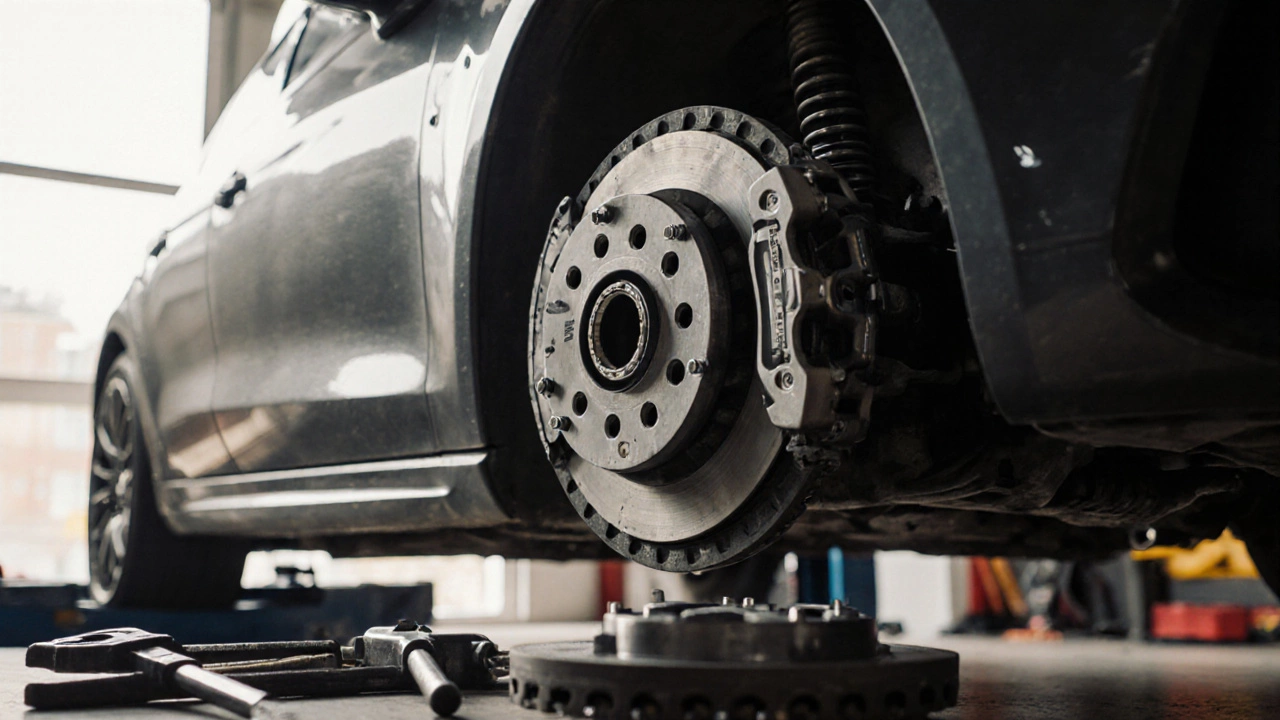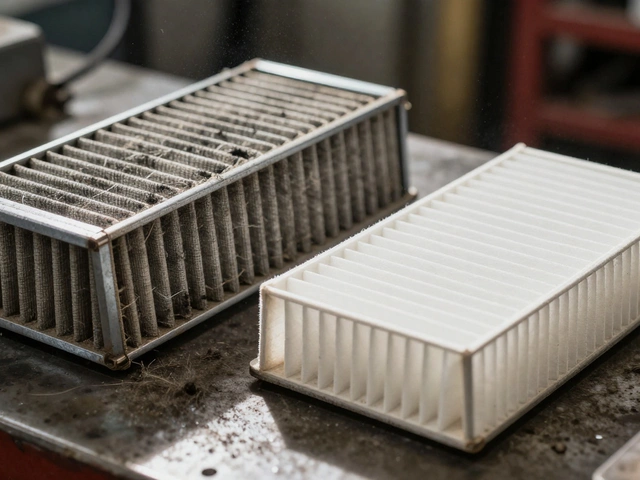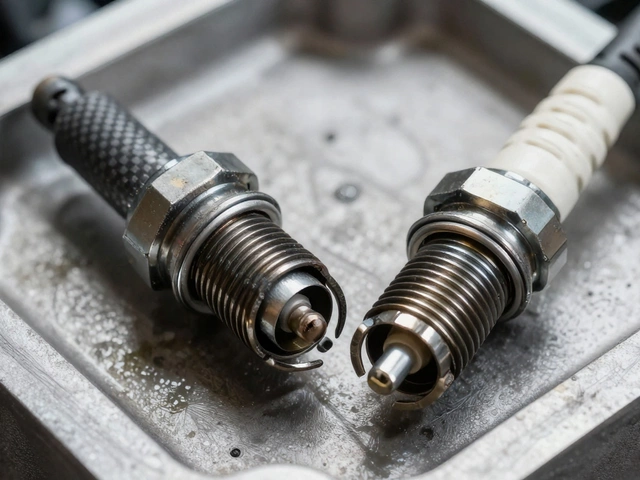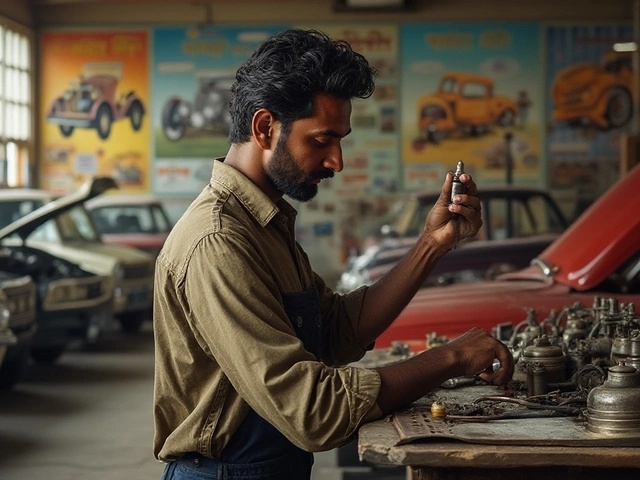Clutch Upgrade Calculator
Input Your Modifications
Stage 1 Guide
Stage 1 clutches handle 10-25% more torque than stock, ideal for mild modifications while maintaining daily drivability.
| Stage | Torque Increase | Disc Material | Driveability |
|---|---|---|---|
| Stock | 0% | Organic | Very Smooth |
| Stage 1 | 10-25% | Performance Organic / Ceramic-Metal | Smooth, Daily-Friendly |
| Stage 2 | 25-50% | Multi-plate Organic / Sintered | Firm Pedal, Chattery |
Enter your modification details above to see if you need a Stage 1 clutch.
Ever hear someone say they’re running a stage 1 clutch and wonder what that actually means? It’s not magic. It’s not some high-tech mystery. It’s just a clutch kit designed to handle a little more power than what came from the factory - without turning your car into a track-only beast. If you’ve added a cold air intake, a tune, or maybe a mild turbo upgrade, your stock clutch might be struggling. That’s where a stage 1 clutch comes in.
What Exactly Is a Stage 1 Clutch?
A stage 1 clutch is the first step up from your factory clutch. It’s built to handle about 10% to 25% more torque than stock, while still being drivable every day. Think of it like upgrading your shoes for a slightly longer hike - you don’t need mountaineering boots, but your old sneakers won’t cut it anymore.
Most stage 1 clutch kits replace the factory pressure plate and clutch disc. The pressure plate usually gets stronger springs to clamp down harder on the disc. The disc itself often switches from a smooth organic material to a slightly more aggressive compound - like a ceramic-metal blend or a high-friction organic material. These changes give you better grip without making the pedal feel like a brick wall.
Unlike stage 2 or 3 clutches, a stage 1 kit rarely requires a lightweight flywheel. You keep the stock one. That’s important because it keeps engine idle smooth and makes stop-and-go traffic easier to handle. If you’re still commuting, running errands, or just want to enjoy your car without fighting the clutch, this is the sweet spot.
Who Needs a Stage 1 Clutch?
You don’t need a stage 1 clutch if you haven’t modified your car. Factory clutches are designed to last 80,000 to 120,000 miles under normal driving. But if you’ve done any of these, you’re probably overdue for an upgrade:
- Added a performance air filter and tune
- Installed a cat-back exhaust with a remap
- Upgraded to a low-restriction turbo or supercharger (even a small one)
- Notice your clutch slipping under hard acceleration
- Feel the pedal getting softer or needing more travel to engage
Let’s say you own a 2020 Honda Civic Type R with a stock 320 hp. You get a stage 1 tune that bumps it to 360 hp. That’s a 12% power increase. Your stock clutch was already working near its limit under hard launches. Now, when you floor it in second gear, the engine revs but the car doesn’t pull as hard. That’s clutch slip. A stage 1 clutch fixes that - and it’ll last longer under this new load.
What’s Inside a Stage 1 Clutch Kit?
A typical stage 1 clutch kit includes three main parts:
- Pressure Plate: Stronger springs, often with a diaphragm design that’s more rigid. This increases clamping force without making the pedal too heavy.
- Clutch Disc: Usually a performance organic or ceramic-metallic material. It’s more heat-resistant and grips better than stock, but still smooth enough for daily use.
- Release Bearing (sometimes): Many kits include a new bearing to avoid future failures. It’s cheap insurance.
Some kits also come with an alignment tool and pilot bearing. Don’t skip those - installing a clutch without aligning the disc properly can cause vibrations or uneven wear. A worn pilot bearing can make the clutch chatter or feel rough.
Brands like Exedy, ACT, Spec, and LUK make reliable stage 1 kits. You’ll see models labeled "Stage 1 Street" or "Performance Organic" - those are your targets. Avoid anything labeled "Race" or "Track Only" unless you’re ready to give up daily comfort.
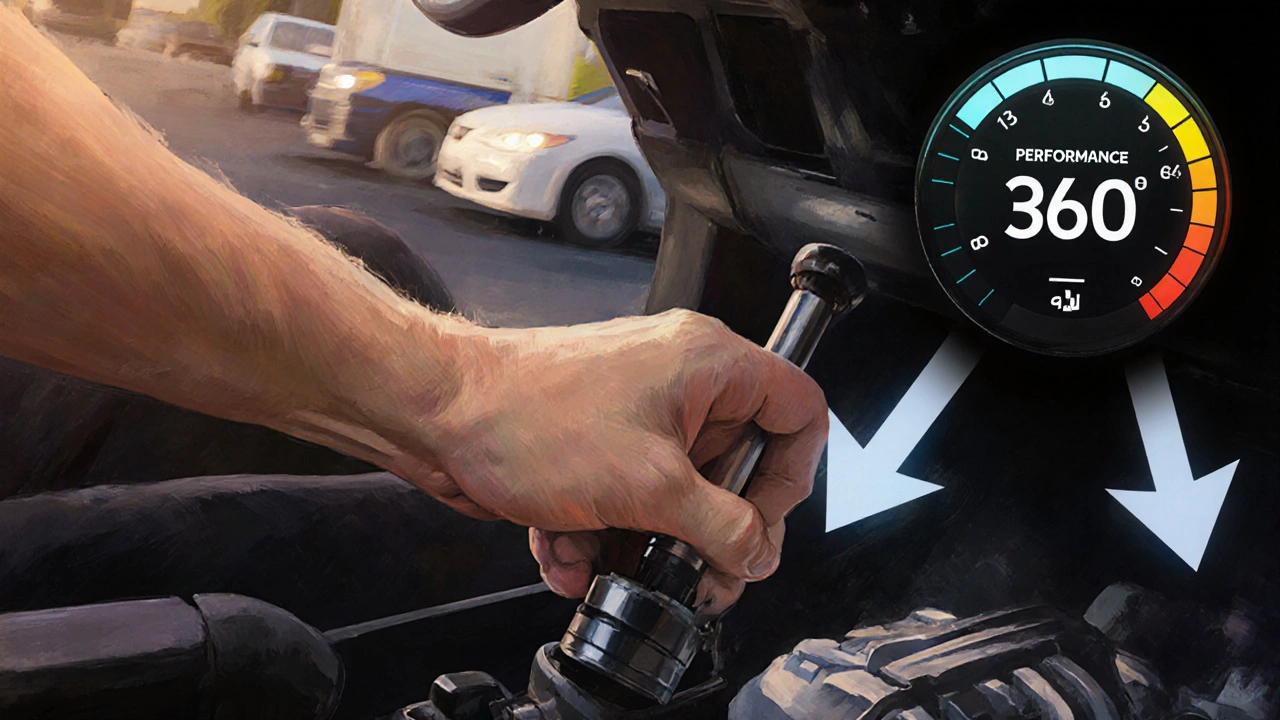
How It Compares to Other Stages
Clutch stages aren’t official standards - they’re industry labels. But here’s how they generally break down:
| Stage | Torque Increase | Disc Material | Driveability | Best For |
|---|---|---|---|---|
| Stock | 0% | Organic | Very Smooth | Unmodified cars |
| Stage 1 | 10-25% | Performance Organic / Ceramic-Metal | Smooth, Daily-Friendly | Light mods, street use |
| Stage 2 | 25-50% | Multi-plate Organic / Sintered | Firm Pedal, Chattery | Aggressive street, track days |
| Stage 3+ | 50%+ | Sintered Metal / Carbon | Harsh, Hard to Modulate | Racing, drag, serious track use |
Stage 2 clutches often use sintered metal discs - they last longer under abuse but feel like driving with a brick on the pedal. You’ll hear chatter at idle. You’ll need to rev-match perfectly. And if you’re stuck in traffic? You’ll hate it.
Stage 1 avoids all that. It’s the only upgrade that gives you real benefits without turning your daily driver into a chore.
What You’ll Notice After Installation
After swapping to a stage 1 clutch, you’ll feel a few changes:
- More bite: The clutch engages closer to the top of the pedal travel. Less foot movement needed to get power down.
- Heavier pedal: Expect about 10-20% more pressure. It’s noticeable but not tiring on long drives.
- Sharper shifts: Gear changes feel more precise. No more vague engagement.
- No slipping: That annoying lag when you floor it? Gone.
Some people worry about noise or vibration. A good stage 1 kit shouldn’t rattle or chatter at idle. If it does, you’ve got a bad install - maybe a worn pilot bearing or misaligned disc. Don’t blame the clutch. Blame the installer.
One thing you won’t notice: fuel economy. A stage 1 clutch doesn’t change how your engine burns gas. It just makes sure the power gets to the wheels.
How Long Will a Stage 1 Clutch Last?
With normal driving, a quality stage 1 clutch lasts 60,000 to 100,000 miles. That’s close to or even better than a stock clutch - because it’s built tougher. But if you’re launching from red lights like you’re in a drag race, you’ll wear it out faster.
Heat is the enemy. If you’re doing frequent high-RPM shifts, hill starts in traffic, or towing heavy loads, your clutch runs hotter. That’s fine for a stage 1 - it handles it better than stock - but it still has limits. Don’t abuse it.
Pro tip: Let the clutch cool down after spirited driving. If you’ve been pushing hard, idle for a minute or two before turning off the engine. That lets the clutch disc cool evenly and prevents warping.

Common Mistakes to Avoid
People install stage 1 clutches and then wonder why they’re having problems. Here’s what usually goes wrong:
- Not replacing the flywheel: If your flywheel is worn or glazed, a new clutch won’t grip right. Resurfacing it is cheaper than a full replacement - but if it’s cracked or warped, replace it.
- Skipping the release bearing: The bearing wears out at the same rate as the clutch. Install a new one. It’s $30 and saves you a second job later.
- Not breaking it in: Most manufacturers say 500 miles of gentle driving before hard use. That means no launches, no high-RPM shifts. Treat it like a new pair of running shoes.
- Buying cheap no-name kits: Amazon specials from unknown brands? Avoid them. You’ll get poor material, inconsistent pressure, and a clutch that fades after a few hard runs.
Stick to brands with a track record: Exedy, ACT, Spec, LUK, or OEM replacements from reputable suppliers. You pay a bit more, but you don’t end up stranded with a slipping clutch.
When to Skip a Stage 1 Clutch
You don’t need one if:
- Your car is completely stock
- You haven’t noticed any slipping or clutch fade
- You’re just looking for "more performance" without real upgrades
Installing a stage 1 clutch on a stock car gives you no real benefit. You’ll pay $800-$1,500 for something that doesn’t improve performance - only durability. And you’ll get a slightly heavier pedal for no reason.
Also, if you’re planning bigger mods - like a turbo upgrade that adds 100+ hp - skip stage 1. Go straight to stage 2. Stage 1 is a stepping stone, not a final destination.
Final Thoughts
A stage 1 clutch isn’t about making your car faster. It’s about making your mods work. If you’ve added power, your clutch has to keep up. Otherwise, you’re wasting money on a tune or intake that can’t deliver its full potential.
It’s the most practical performance upgrade you can make. No loud exhaust. No body kit. Just a clutch that works better with your car’s new personality. And if you drive it like a normal car, it’ll last for years.
Just remember: it’s not about how much power you can handle. It’s about how much power you’re actually using - and whether your clutch is letting it all through.
Is a stage 1 clutch worth it for daily driving?
Yes, if you’ve made any power upgrades - even small ones like a tune or air filter. A stage 1 clutch prevents slipping, improves shift feel, and lasts longer under increased load. It’s smooth enough for traffic and won’t make your commute a chore.
Can I install a stage 1 clutch myself?
If you have basic mechanical skills and the right tools - jack, torque wrench, clutch alignment tool - you can do it. It takes 6-10 hours. But if you’ve never worked on a transmission before, it’s risky. A misaligned clutch or bad pilot bearing can cause vibrations or premature failure. Most people opt for a shop to avoid costly mistakes.
Does a stage 1 clutch increase horsepower?
No. A clutch doesn’t add horsepower. But it lets your engine’s existing power reach the wheels without slipping. If your stock clutch was slipping at 300 hp, and you upgrade to a stage 1 that handles 360 hp, you’ll finally feel all the power your tune created.
How do I know if my clutch is going bad?
Signs include: clutch pedal feeling softer, needing more travel to engage, engine revving without acceleration (slipping), a burning smell, or vibration when releasing the clutch. If you notice any of these, especially after tuning your car, it’s time to check the clutch.
Should I replace the flywheel with a stage 1 clutch?
Not always. If your stock flywheel is in good condition - no cracks, grooves, or glazing - you can resurface it. But if it’s worn, warped, or over 100,000 miles, replace it. A bad flywheel will ruin a new clutch fast. Most shops recommend replacing it if the clutch is being swapped for any reason.
